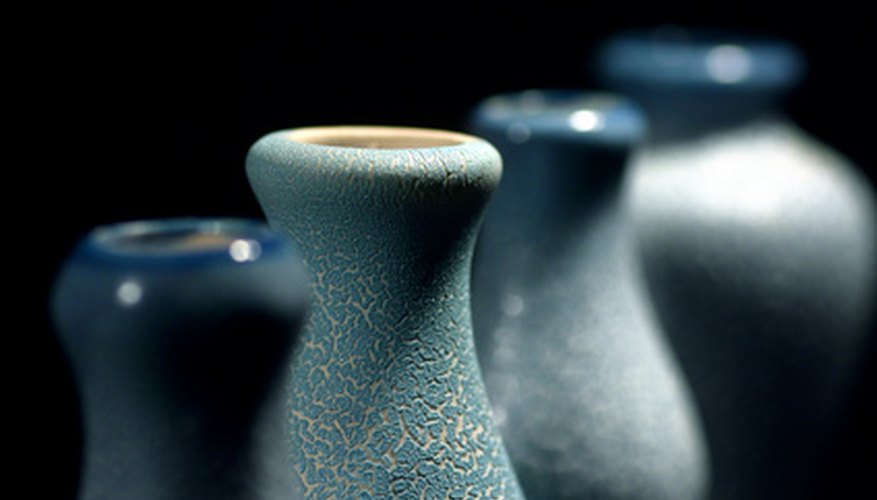People often decorate handmade ceramic pieces by painting them with coloured or textured glazes that can dramatically change the appearance. Unfortunately, if a glaze is not mixed correctly or not correctly fired, the finished product may be less than desirable. If you have a ceramic project that did not turn out as planned you do not have to throw the piece away and start from scratch. If you have a little patience and the right materials you can remove the glaze from clay pots so that you can salvage your work.
- People often decorate handmade ceramic pieces by painting them with coloured or textured glazes that can dramatically change the appearance.
- If you have a little patience and the right materials you can remove the glaze from clay pots so that you can salvage your work.

Protect your body by using personal protective gear. This project involves electric machinery that will forcibly remove the glaze from your ceramic items. This debris can be hazardous to your lungs and can potentially cut through your skin due to the glaze's glasslike nature. Wear safety goggles, a dust mask, long sleeved shirts and long trousers.
Remove glaze using an abrasive sandpaper and an electric sander. Turn the sander to its lowest setting and gently wear away the hard glaze. Be careful not to apply too much pressure as ceramic items are potentially fragile and can easily break from harsh vibrations and pressure. If your item is extremely fragile, has small extended pieces or is made of slabs that are relatively thin, you may want to do this task by hand without the electronic sander.
Clean your clay pot to remove any lingering glaze and residue. Using a damp sponge and a penny sized amount of dish detergent, gently scrub the entire surface of the piece. Rinse, ring out the sponge and repeat the scrubbing process once more to remove excess soap.
- Remove glaze using an abrasive sandpaper and an electric sander.
- Using a damp sponge and a penny sized amount of dish detergent, gently scrub the entire surface of the piece.
Allow your ceramic piece to completely dry before reglazing. Place the item on a towel in a warm, well lighted area so that it can dry quickly.
WARNING
Carefully evaluate the durability of your ceramic or clay pot when determining whether to use the electric sander. Glaze fragments are sharp enough to cut through skin and can severely damage eyes. Make use of personal protective gear while sanding. You will also want to wear your dust mask during cleanup, as sweeping will push the dust and glaze fragments into the air.
